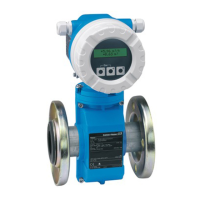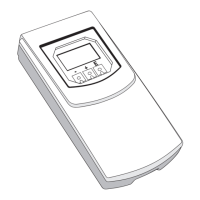Commissioning Proline t-mass 65 PROFIBUS DP/PA
84 Endress+Hauser
Performing a zero point adjustment
1. Operate the system until operating conditions have settled.
2. Stop the flow (v = 0 m/s).
3. Check the shut-off valves for leaks.
4. Check that operating pressure is correct.
5. Using the local display, select the ZEROPOINT ADJUSTMENT function in the function matrix:
PROCESS PARAMETER ZERO POINT ADJUST
6. When you press O or S you are automatically prompted to enter the access code if the
function matrix is still disabled. Enter the code (factory setting = 65).
7. Use O or S to select START and press F to confirm. The zero point adjustment now starts
and is completed within a few seconds.
!
Note!
If the flow in the pipe is unstable, the following error message may appear on the display "ZERO
ADJUST FAIL". The zero point adjustment has failed. The preconditions need to be stabilised
before attempting a new adjustment.
8. Back to the HOME position:
– Press and hold down Esc key (X) for longer than three seconds or
– Repeatedly press and release the Esc key (X).
Resetting a zero point adjustment
The currently stored zero point can be reset to the original factory value by using the RESET option
within ZERO POINT ADJUST.
Use O or S to select RESET and press F to confirm. The zero point adjustment is now reset.
6.10 Data storage device (HistoROM)
At Endress+Hauser, the term HistoROM refers to various types of data storage modules on which
process and measuring device data are stored. By plugging and unplugging such modules, device
configurations can be duplicated onto other measuring devices to cite just one example.
6.10.1 HistoROM/S-DAT (sensor-DAT)
The HistoROM/S-DAT is an exchangeable data storage device in which all sensor relevant
parameters are stored, i.e., pipe type, diameter, serial number, flow conditoner, zero point.
6.10.2 HistoROM/T-DAT (transmitter-DAT)
The HistoROM/T-DAT is an exchangeable data storage device in which all transmitter parameters
and settings are stored.
Storing of specific parameter settings from the EEPROM to the HistoROM/T-DAT and vice versa
has to be carried out by the user (= manual save function). Detailed instructions ä 58.

